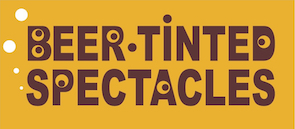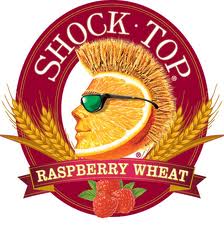There’s a lot going on in beer at the moment: there’s a daily news narrative on craft beers; stories about old names being revived; people setting up breweries in shipping containers. Proportionately, there’s less about the corporate side: the 90% if you will. But it deserves some attention, particularly at this time. Particularly with the biggest deal in brewing ever being slated. Particularly with one of the biggest corporate deals ever, in fact.
That craft beer narrative is immensely strong. It is more than a story though; it is creating reverberations not just within beer, but across alcoholic drinks, across non-alcoholic drinks and beyond. The craft beer ‘revolution’ is the poster boy of reactionary consumerism; the proof that you can change the food industry not just from within but from the outside too. It is the manifestation of a growing consumer desire for authenticity, transparency, of personal stories over fabricated myths, or small over large – right across the food and drink industry. There’s a clear argument to be made that ABI buying SAB is a consequence of the rise of craft beer. Certainly if you look at their outputs it is supported: over the last few years ABI have bought ‘breakthrough’ craft breweries: Widmer, Kona, Goose Island amongst others; elsewhere they’ve been copying the rules of craft with brands like ‘Shock Top’. SAB have been concentrating more on strengthening their own brands and now have an incredible portfolio, with brands like Pilsner Urquell, Peroni and Grolsch. They too have bought into craft with the acquisition of London’s Meantime Brewery.
Let’s push beyond the “eazey-news” headlines though. What’s really going on here is polarisation. Yes, craft is growing but it’s growing disproportionately quickly in mature beer markets. Large scale, low growth markets; markets where consumers have had mass marketing rammed down their gullets for decades. But ABI and SAB have their focus elsewhere: to the places and the brands that they can drive long-term shareholder value growth. They’re focus is on central and southern America, India, Asia and Africa. ABI are clear that they want to be the first ‘global brewer’ and this deal gives them an incredible beachhead to push for conquest. As a deal, it will make South America a fortress; it will revolutionise their position in Africa; it will strengthen their footprint in Asia, in particular China, where they will acquire the World’s biggest beer brand, Snow.
Watching this form the side lines, what’s impressive about ABI is their utter commitment to the goal. The newswires yesterday were humming with the revelation that they would be prepared to sell off SAB’s prime assets, notably Peroni and it’s Nastro Azzurro brand. Grolsch too, was mooted as a candidate for sale. They have form here: when InBev acquired Anheuser-Busch they sold off Tsingtao in China – one of the few successful Sino-Anglo Saxon partnerships and a real crown jewel. This tells us a number of things about ABI. It tells us that they have a clear focus for growth outside North America and Europe where Peroni is notably strong – Peroni is a great brand but in the short term the only thing it is likely to do is give them issues with regulators (plus, the US rights stay with MillerCoors should the deal go ahead). It tells us that they have a purpose that is unifying and guiding their decisions. It tells us that they are willing to make not just choices but sacrifices – big sacrifices – in order to achieve their vision. And it tells us too that they believe in their brands – brands that craft beer lovers are generally scathing of (Bud Light, Budweiser, Stella Artois as well as an army of local brands – and they will back them to the hilt in markets outside our (European / North American) frame of daily reference. Whether you’re comfortable about the size of this deal and the global market share it will leave ABI with, it will be churlish – no, foolish – to ignore the business and brand building lessons that they teach us, again and again.

